Work Text:
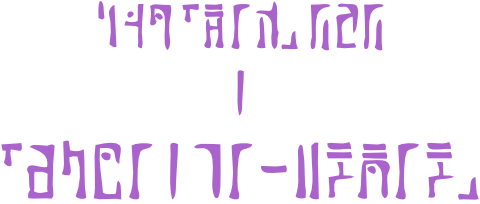
A Field Guide to Fairies
by
Link “Vio” Smith
Table of Contents
Introduction
Fairies, sometimes called the Fair Folk or Fae, are a Faroran race which has existed in Hyrule and surrounding countries since the early days of the world. Once thought to be a species completely separate from Humans and other Farorans, recent developments indicate the Fair Folk may not be so divorced from mankind as once thought.
I and my brothers have, through divine workings, had the opportunity to travel across time with past and future Heroes of Courage, each known for their extensive travels in Hyrule and abroad and for their close ties to Fairies. In our line of work, we frequently travel with Fairies for aid and companionship, and the individuals traveling with us have been kind enough to share information which has hitherto gone undocumented. While our adventure across time involves far more than is within the scope of this guide, further matters unrelated to the subject at hand will be reserved.
He really, really wanted to say “divine machinations”.
Additionally, while Nayru’s providence guides the flow of time, certain details regarding the eras in which the described Fae societies live will be withheld lest excessive detail affect the flow of history. This text, therefore, should be considered a historical record for those in the distant future, rather than a guide for the present.
No one we love has spontaneously disappeared from existence, so writing this hasn’t damaged the timeline that badly. Yet.
Characteristics
First, one must define “Fairy”.
Each of Farore’s children has defining traits, by which we may classify them into races. Humans, often erroneously seen as the race by which all others are defined, are bipedal, mammalian creatures similar in form to the primates of the Faron woods. They lack many of the specialized adaptations of the other races, such as the Goron resilience to heat or the Zoran ability to breathe underwater, but make up for the deficiency by their broad adaptability. Few other races can be found in such a myriad of environments.
Nevertheless, it is simplest to define a Fairy by how they differ from Humans, who may be their closest cousins in the Faroran tree of life.
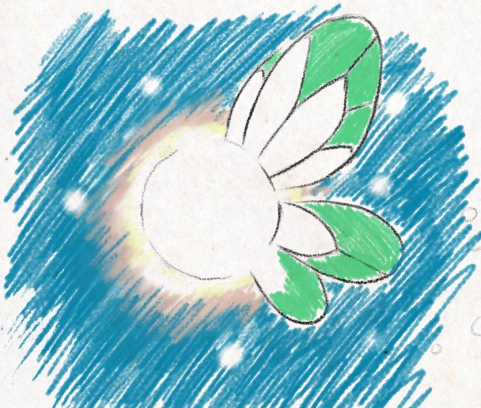
Like the Picori of legend, Fairies are typically diminutive, ranging from mere centimeters in height to the size of an average adult Human hand. While their form is typically obscured by bioluminescence, they are bipedal creatures most similar in appearance to Hylians (for their pointed ears).
“of legend”, he says.
Well, they are to most people.
Fairies appear to be sexually dimorphic. However, their physical appearance is unrelated to reproduction and is merely a form a Fairy chooses to take via magical shape-changing. While most take on a feminine form, some choose masculine or androgynous traits or a combination thereof. This may be a continuation of the mimicking behavior exhibited in earlier life stages (See: Infancy).
While full Fairies have no discernible biological sex, they may adopt gendered signifiers used by other Faroran races for the purposes of facilitating interaction with other races or for amusement. In homage to the Golden Goddesses, Great Fairies take on traits and signifiers associated with femininity. When addressing a Fairy, as with all people, one should take care in respecting the signifiers they chose for themselves and accept corrections with grace.
Most Fairies have four wings, connected to the body near the scapula and covered in a fine layer of sporal dust (See: Mushrooms). In addition to its involvement in reproduction, the dust has protective properties, shielding a Fairy’s delicate wings from the elements. Some Fairies, depending on their place and era of origin, also have sensory antennae. The exact description of both the wings and antennae vary. In particular, the pattern and form of a fairy’s wings appears to be correlated to the element with which they are most closely attuned and the environmental magic available during their nascent development (See: Elemental Forms).

Due to the magical nature of Fairies and the impossibility of postmortem examination (See: Death), an exact description of their anatomy (e.g. the way in which their wings connect to their torso musculature) is difficult to ascertain. I am assured, however, that their wings are physically connected to their bodies and thus experience similar sensations as our arms or legs.
Please don’t autopsy a fairy.....
Among Fairies exists a notable variant in the Great Fairies[1] (See: Societal Structure). Great Fairies are usually significantly larger than their children, often the size of an adult Human or larger. Great Fairies may have wings like their smaller counterparts, but at a reduced frequency. Due to their size, their wings may be vestigial; while Great Fairies are capable of flight, their wings do not appear to have a mechanical purpose in achieving lift.
Of all their traits, the most prominent is the Fair Folks’ connection—even dependence—on magic. Fairies are, without exception, magical creatures. Magic is as integral to their vitality as air is to a Human, stone to a Goron, and water to a Zora.
Other creatures are closely related to Fairies and commonly confused as such. In our own era, the people known as Minish (or more commonly in Hylian society, Picori) are often incorrectly thought of as Fae. While they have similar cultural hallmarks, Minish are likely cousins to Fairies in the same way Humans are cousins[2] to Fairies.
The inhabitants of the Lost Woods are also often confused with Fairies. While their societies often live in mutual symbiosis, we posit the inhabitants of the Lost Woods are Spirits (i.e. minor deities or their servants) rather than Fairies[3]. The children of the Great Deku Tree, for example, may form partnerships with Fairies in much the same way as the ancient Hylians partnered with great birds. However, the forest children have a distinctly different lifecycle than Fairies, arising from and fading into the forest of their conception by the will of their guardian deity.
Does the Great Deku Tree exist yet? Should we mention him if he doesn’t?
Lastly, there are alternate forms Fairies may take depending on certain environmental conditions or the health of the Fairy. For example, the creatures known as Anti-Fairies (or Bubbles) are Fairies subject to a certain curse. Zirro also appear to be Fairies, given a new form by exposure to ambient Malice (See: Malefic Corruption).
Magic
As with other Faroran races, Fairies have access to a broad variety of magic. However, Fairies are naturally gifted at magic and have larger pools of thaumic energy than other races. While only a few members of other races can use magic, and fewer still without the aid of magical items, all Fairies can use magic to some extent. Additionally, Fairies have access to multiple types and elements of magic, whereas other Farorans are usually limited to a handful at most and usually only one.
While this list is far from comprehensive, the magic we have personally witnessed Fairies casting includes elemental magic (e.g. summoning fire, lightning, shockwaves), shields and protective wards, glamours, transformation (both of their own form and certain monsters with unstable forms[4]), and healing.
Great Fairies, in particular, are masters of magic and have been of aid to heroes and adventurers since the dawn of the world. It should be noted, however, that one should expect to pay a fair price for the services a Great Fairy can provide (See: Bargains).
Healing
The most well-known type of Fae magic is healing. Not all Fairies can heal (in particular, the young and infirm), but it is the most common type of magic possessed by Fairies and the most powerful. A Fairy’s magic can rescue a person from the most severe, life-threatening injuries, as long as the person still lives.
However, healing magic is costly. Most Fairies with the capacity to cast healing magic can restore one critically-injured person to a medically-stable state, after which the Fairy will require rest or some form of immediate magic regeneration (i.e. magic-replenishing potions). Smaller applications of healing magic can close wounds, heal burns, mitigate concussions, and mend broken bones. Some illnesses may also be mitigated or alleviated, but not outright cured.
As for the mechanism, it has been described as simply “making things how they’re supposed to be.” This author posits that the magic used is similar to the mimicry magic exhibited by nascent Fairies (See: Infancy). Magic can be molded and grafted into the patient’s form, mimicking lost or necrotized flesh or blood and bracing other internal injuries. As with healing potions which accelerate a body’s natural healing processes, injuries such as broken bones must be set before healing in order to heal correctly.
Lifecycle
Infancy
The majority of encounters with Fairies are with their adult form. Nascent Fairies are masters of camouflage, appearing as completely different creatures. Thus, sightings of newborn Fairies are common, but not often recognized as such. Depending on the local fauna, a newborn Fairy may appear in the larval or nymphal form of a butterfly, mayfly, or any other form of winged, metamorphic (or hemimetabolous[5]) insect.
Newborn Fairies mimic a host insect species in a form of brood mutualism[6] from egg into the host species’ young adulthood. In an area colonized by Fairy mushrooms (See: Mushrooms) and suffused with thaumic energy, magic coalesces around fungal spores to form motes. Once sufficiently formed, the mote mimics the appearance of an egg within the host species’ brood.
When the host brood hatches, so too will the Fairy enter their first stage of ambulatory life. The mimicry continues for the duration of the host species’ larval stage, at which point the Fairy and their brood siblings will undergo full or partial metamorphosis, either forming a pupa or moulting.
During the larval period of development, local Fairies adopt and rear the Fae children, taking care of their physical, mental, and emotional needs. The adult Fairies are also responsible for preventing predators who prey upon the host insects from hunting the Fae children and, by consequence, from hunting the host species as well. As a result, the host species benefits from this partnership with Fairies.
As the length of a host species’ incubation and larval development varies, so too does the Fairies’ physical development. For example, a Fae mote mimicking a mayfly egg will “hatch” anywhere from a few days to a year after coalescence. The mayfly nymphal stage lasts from several months to several years. By contrast, a Fae mimicking a butterfly may have an incubation and larval development period as little as a month. At the end of the larval stage for each host species, the Fae mimics the metamorphosis (or partial metamorphosis) into the host’s adult form.
Even while taking the adult form of the host species, a Fairy remains a child in Fae society until they are sufficiently capable of shape-changing into their true adult form. On average, this takes place around the age of three years.
So if you find a really long-lived butterfly, let it go because it might be a fairy! ...Actually, let it go anyway. Don’t be mean to bugs.
Hybridism
While rare, and in some conservative groups considered taboo, compatible members of the Faroran races can and do interbreed. The most common and well-known interracial partnerships are between Gerudo with attractions to genders other than vai and other non-femme Humans[7]. There is also precedent for Gorons and Zoras to court and mate outside of their race, albeit more rarely.
Fairies, despite their lack of true sexual characteristics, can procreate with Humans (and likely other races). The exact mechanism is unknown, but this author theorizes that Fae-Human conception occurs when an ovulating Human spends time in an area ripe for mote coalescence and contemporaneously engages in intercourse that results in a fertilization. Through the aforementioned brood mutualism, a mote of magic mimicking a Human ovum becomes a viable embryo, which then may be carried to term by its surrogate bearer over the span of nine months.
During our travels with a person of Fae-Human parentage, we were unable to ascertain the full details of his origins due to his own lack of knowledge of the matter and out of respect for his aversion to the subject*. By his reckoning, he was born to and raised by two Hylian parents and had, for his place of birth and economic status, a normal childhood. As a teenager traveling abroad, he was taught how to harness his innate magic and, as a result, discovered the truth of his mixed parentage. He was later adopted by a Great Fairy, whom he considers a second mother.
* Can you blame him...?
Whether a Fae hybrid is capable of producing offspring is unknown and, to this author, likely to remain a mystery.
I am not thinking about this. Rulie’s sex life is none of our business. Ew.
While most frequently taking the form of a Hylian man, said person is able to change his shape and size to match a typical masc-presenting Unaspected Fairy. The transformation, however, requires considerable magic in either direction. The subject also inherited a metabolism unique to Fairies (See: Diet) in which sugars may be converted directly into magic upon consumption in addition to the slow natural regeneration experienced by most wielders of magic. More detrimentally, the person has acute difficulty in telling lies or breaking promises, which may be due to cultural or psychological reasons but is more likely a psychosomatic trait unique to Fairies.
Lastly, said person is a spellcaster of extraordinary innate talent*. Like his Fairy ancestors, he has access to a wide range of healing, protective, utility, and offensive magics, as well as an outsized pool of thaumic energy from which to cast. While his skill may be his own, one cannot deny his ancestry likely played a part, as most fully Human magic wielders are limited to one school of magic and/or the use of magic items[8].
* This is a nice way of saying he figured out how to throw fireballs before lighting a candle.
Changelings
Given the verified existence of half-Fae children, we must address the dodongo in the room: changelings. In folklore, changelings are Spirits, Fairies, or Demons who take the appearance and place of a kidnapped person in a host family. The victim is often a child, but occasionally an adult.
Based on the theory proposed regarding the origins of half-Fae children, one might be tempted to consider such a child to be a changeling; however, this author urges the reader to banish all such notions. A half-Fae child is an addition to the family rather than a substitute for a lost child.
We see evidence of this in the brood mutualism Fae share with insects. Motes of magic do not destroy or take away any existing eggs in the brood upon entry. The mote, mimicking an egg, is added to the brood.
That said, the revelation of a child’s Fae origins may bring complex emotions for both the parents and the child themself. Their feelings should be met with compassion. However, the truth is not an excuse to diminish the child’s personhood or deny their shared history with their family.
Lastly, we must address the actual folklore, in which a child is truly replaced by another entity. As with many legends, we must consider the possibility of some factual basis. There are certain rare monsters (e.g. Aches) who can shapeshift and take the form of a Faroran. Monsters, by and large, are also capable of kidnapping. It is, therefore, not beyond reason that a monster could assume the identity of a stolen child.
However, the incidence rate of this occuring is likely far lower than the incidence rate of people accused of being a changeling. More often, the changeling myth has wrongfully served as an explanation for differences in a child’s development, such as deformity or disability or unexpected behavior.
Like when we came back different after our adventure.
Of course, one must not dismiss the existence of shapeshifting monsters. If genuine suspicion arises, the wisest course of action is not to leap to conclusions, but to seek the guidance of a trusted local priest or learned scholar. A priest, in particular, may recognize signs of actual Malice but can also provide counsel to families grappling with uncertainty.
Adulthood
At three years old, most Fairies can speak their native language fluently, fly, cast magic (e.g. basic glamors and shape-changing, affecting themselves or a small area), and take on basic responsibilities within their court. As with other Farorans, Fairy adults continue learning and expanding their skill sets for the rest of their lives, even as their physical growth ceases. A Fairy is fully grown around five years of age.
The maximum age of a Fairy is presently unknown. Fairies are effectively immortal[9] as long as they have access to sweet food or raw magic. After several centuries, a Fairy may willingly choose to end their life (i.e. “return to the earth”), having experienced everything they wished to experience and after passing on their knowledge to younger Fairies.
Death
In death do we find the greatest difference in life cycles between Fairies and any other Faroran race. Due to their long lives and private nature, it is extremely rare for an outsider to witness a Fairy’s death, and rarer still to take part in their funeral rites.
Due to tragic circumstances, my brothers and I were granted the opportunity to take part in the funeral for a Great Fairy. Due to the situation, the rites we witnessed were slightly modified. The process detailed anon (See: Funeral Rites) is the sequence of rites traditionally held by the Great Fairy or the Fairy who will immediately succeed her.
Outside of funeral customs, the biological process of a Fairy’s death is thus: when a Fairy reaches the end of their life, their body breaks down into magic-rich dust—the same which covers their wings. The dust is colloquially called Fairy dust or pixie dust, but is more accurately called spores. Fairy spores, when introduced to an organic substrate (i.e. spawn) and moisture, produce mushrooms (See: Mushrooms).
Funeral Rites
It should be noted that the funeral rites described here are the custom in an era far from our own. Funerals in the era in which this book is published may be different and, if one is invited to a Fae funeral, one should not assume that the rituals will unfold as detailed here.
Indeed, the customs likely evolved in the centuries since Hylians returned to the surface, as there are hallmarks of Sky Era Sheikah purification ceremonies combined with what is likely the original, indigenous Fae keening.
As in many ceremonies, offerings to the spirits and the deceased are expected. Acceptable offerings include foods high in sugar, rupees, or other items with high concentrations of magic. If the guest is not able to contribute any material offerings, music is also acceptable.
- Introduction
The Great Fairy (or her eldest daughter) announces the death to the Golden Goddesses through sung prayer. - Familial Offerings
The immediate family—that is, Fairies local to the fountain in which the deceased Fae lived—make offerings to the deceased and their Mother at the fountain. - Dirge
The Great Fairy and her daughters purify the fountain through prayer and music. Each song is personal to the singer and relates to their personal connection to the deceased. - Purification
The Great Fairy (or her eldest daughter) purifies herself by immersion in the newly purified waters of the fountain. - Transfer of the Soul
In the event the Fairy’s remains are not retrievable, the Great Fairy ceremonially transfers the soul of the deceased Fairy into a flammable vessel. The vessel is then cremated and handled in the place of the Fairy’s spores. - Gathering of the Dust
The remains of the deceased Fairy, their spores, are brought to the fountain and mixed with water from the pool and a substrate to create fertile mushroom spawn. - Guest Offerings
Friends of the deceased Fairy, including Fairies visiting from distant fountains, may make offerings at the fountain. - Food
Family and guests take part in a communal meal in or near the fountain. This food is separate from the offerings made to the Mother and the fountain. - Coronach
At the close of the ceremonies, attendants sing their final farewells to the deceased as they depart the fountain. As with the dirge, the coronach song is highly personal to the singer. - Scattering of the Spawn
Guests are given spawn to spread. A few Fairies are asked to spread spawn near the fountain, but the rest are asked to spread it as far from the fountain as they are willing to venture. The chosen locations often have meaning to the guest or to the deceased. - Announcement
Traveling guests are also expected to announce the death to the next Great Fairy they encounter. As most guests are Fairies, they would announce the death to their own Mother upon return to their home fountain.
Mushrooms
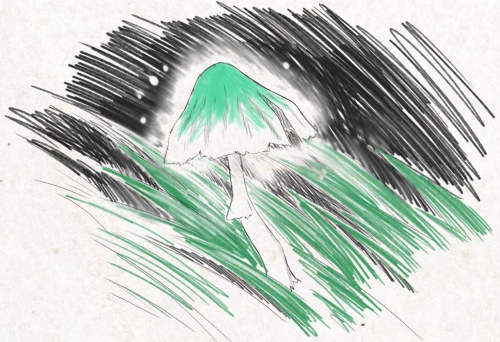
Upon death, a Fairy’s body is broken down into spores which, when put in contact with an appropriate growing medium, will produce mycelia. Fairy mycelia are similar to the typical fungus, save for one special characteristic: in addition to breaking down organic matter into humus, Fairy mycelia break down organic matter into magic.
Faeshrooms
No.
Over time, an area colonized by Fairy mycelia will become suffused with magic. As the mycelium matures, its hyphae[10] may come into contact with other mycelia, resulting in fertilization. When fertilized, the mycelia produce a mushroom above ground, which disperses spores into the air. The spores attract magic, forming motes, which develop into newborn Fairies. Thus the circle of life continues for Fairykind.
Fairy mushrooms are well-known throughout the ages for their medicinal properties. Both historically and in the future, magic mushrooms are a common ingredient in healing potions and elixirs. Even in their raw form, Fairy mushroom spores can have healing properties. For example, they were used by ancient Hylians to heal injuries suffered by their partner birds.
In the hands of a skilled witch, Fairy mushrooms can be processed into a powder with several magical effects, the most important being to restore a Malice-corrupted Fairy to its natural form. This requires both the concentrated magic found in the spores themselves and special purification techniques to cleanse Malice from the affected Fairy.
As a note, not all mushrooms are Fairy mushrooms, and many mushrooms are poisonous. One must always be cautious when foraging for mushrooms. Additionally, while non-toxic, Fairy mushrooms are not palatable to humans.
Except Wild.
They were okay once he sauteed them.
Because all you could taste was the butter.
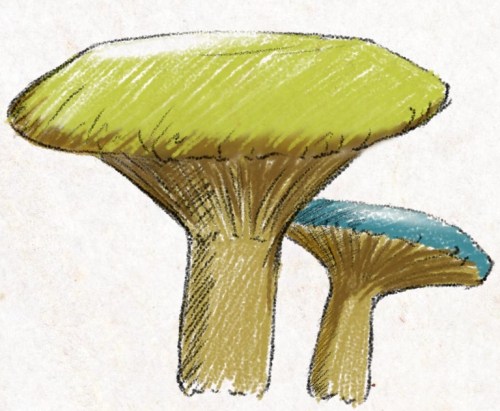
They’re the same colors as Zirro... Coincidence?
I was tempted to put that forth a theory regarding that. Considering the high concentration of Malice in Wild’s era, it is plausible.
Culture
Fountains

Fairy courts—a community of Fairies somewhat analogous to a village—are centered around the fountain. In locations with a source of water and a high magic concentration, either through the decomposition of organic matter by Fairy mushrooms (See: Mushrooms) or the natural flow of magic through the earth[11], Fairies may establish a fountain.
Fairy fountains are pools of water supersaturated with magic. By dissolving rupees and other magic-dense objects in the pool, the water is made into a long-term storage solution for magic, the most critical resource for a Fairy population. Fairies live near their home fountain and return to it when their magic is exhausted. The resident Great Fairy lives submerged within the fountain’s waters.
Due to the extremely high concentration of magic, space within the fountain is warped, creating a small pocket dimension within the pool. This allows more water within the extradimensional space, allowing more magic storage and providing a safe haven for the local Fairies to hide within should danger encroach upon the fountain.
Societal Structure
Fairies have a looser societal structure compared to most other Faroran races, as their communities tend to be both smaller and more close knit. On a local level, a court is led by its Great Mother, the Great Fairy presiding over the local fountain. The Great Fairy is usually a daughter of the previous Great Fairy—often the eldest—chosen to succeed the Great Fairy upon her death. In the period leading up to a transition, the successor trains in the magic necessary for the role while significantly increasing her own magic stores in preparation.
Under the Great Fairy, all others are equal. The Great Fairy may assign tasks to their children according to their needs and skills, such as care for young ones, trade with other races or courts, foraging and animal husbandry.
Above the Great Fairies rules a Fairy Queen (or, very rarely, King), the Great Fairy of the era most skilled in magic. In times of great need, the Great Fairies may confer with the Fairy Queen to coordinate a response to wide-reaching threats or issues. The region ruled by a Fairy monarch varies by era and is not fixed to the geopolitical borders created by other races.
While Fairies often ally with other Faroran races, they are not beholden to their governments. In our own Hyrule, it has been policy since the dawn of the queendom to maintain the independence of Fairy communities within Hyrulean borders.
However, this alliance is fluid and circumstances may draw our societies closer when the need is great. In one era, Fairies work closely with the Hyrulean army in roles such as communications, espionage, and magic artillery. This should not be taken as a recommendation for our own era, as there is presently no need for a military alliance and the price of such an alliance may be higher than we wish to pay (See: Bargains).
Language
While Fairies are often fluent in the common language of the era and greater geopolitical area (e.g. Hyrulean in Hyrule), they also have their own native language known to Humans as Sylvan[12] and to the Fairies themselves as Òran. For the purposes of the audience, we will use the Human term here.
Sylvan, like its speakers, has certain magical features. False words die on the speaker’s tongue and promises spoken in Sylvan are binding, rendering the speaker agitated to a painful degree should they attempt to break the promise, up unto the point the promise becomes impossible to fulfill. This carries over into other languages as a habit of speaking honestly, even when it may be to the Fairy’s detriment. However, the magical elements of Sylvan have no influence over lies by omission or misdirection, which some Fairies are quite willing to implement.
One might expect the inability to lie to lend Fairies a sense of naivety when dealing with dishonesty. To the contrary, Sylvan-speaking Fairies find that lies sound awkward in any tongue and thus have an acute sense for falsehood.
Diet
Despite the common assumption that Fairies are purely herbivores or thaumavores, Fairies are omnivorous.
While a Fairy can technically subsist purely on magic or sugar, Fairies can suffer the effects of malnutrition without access to a variety of food. In Fairies, symptoms of dietary deficiency include a dimmed glow, slowed magic regeneration, impaired concentration, and fatigue. Unlike other Farorans, the Fae physical form is predominantly magic, meaning the physical symptoms one might expect in a person experiencing starvation do not appear.
In general, Fairies can eat anything a Human can eat. Additionally, Fairies can safely consume natural foodstuffs with high concentrations of magic energy that would be dangerous for other races to consume, such as the magic seeds native to Holodrum and Labrynna. They also appear to have no aversion to certain edible items that other Farorans* find unpalatable, such as skullfish, bombfish[13], and the rock-meats mined by Gorons.
* Except Wild, again.
Most uniquely, Fairies are able to digest rupees. As rupees are fully-crystalized magic, they provide no nutritional value to a Fairy other than supplying magic. Additionally, it takes significantly longer to digest a rupee than other more palatable foods. The waters of a Fairy fountain can quickly break down rupees into raw magic, imbuing the water itself with magic. As such, many Fairies are tasked with collecting rupees as a form of long-term magic storage within the fountain.
Fairies are largely foragers, subsisting on local berries, fruit, nuts, mushrooms, insects[14], bird eggs, shellfish, and small fish. On occasion, Fairies engage in small-scale farming or fishery where there is a need for a more steady food supply.
Clothing
For Fairies, clothing is considered optional, and historically Fairies have abstained from wearing clothes at all. Great Fairies are sometimes known to cast glamors to appear in elegant gowns. While this may facilitate interactions with Humans, who consider it impolite to be unclothed among guests, the primary reason for a Fairy to wear clothing and jewelry is for enjoyment. Occasionally, Fairies select clothing styles deemed gendered by Human societies to reinforce their chosen gender presentation.
Fairy clothing, as it needs to make no concessions for protecting the wearer from the environment, can be tailored exclusively for appearance. Additionally, due to the small size of the garments, there is less concern regarding the usage of expensive materials such as fine silks. Lastly, Fairy-made textiles have an extremely high thread count compared to cloth made by the larger races due to both the size of the maker and access to finer materials (e.g. spider silk, rodent wool).
As the closest race in size to Fairies, the Minish occasionally trade jewelry and other small metalwork items in exchange for textiles and finished clothing. When they exist close to Human society, members of both races have also been known to repurpose doll clothing and small jewelry items if they find something to suit their taste.
It should be noted that many Fairies experience pain when in direct physical contact with pure, unalloyed iron (i.e. cold iron). When trading metalwork with Fairies, take care to remove any items of pure iron.
Bargains
While other races may leap at the chance for a bargain in our favor, Fairies insist that a trade be fair[15] to all parties. When dealing with a Fairy, you must make an effort to give no more or less than what is requested and take no more than your trade is worth.
Fairies have an acute sense for honesty and falsehood and will refuse to bargain with a person who is not being honest in their dealings. If one does manage to cheat a Fairy in a bargain, that Fairy and their siblings will exact vengeance, either through pranks, minor curses, or simply refusing to heal the malefactor’s injuries should the need arise. If you find yourself in a position to bargain with a Fairy, you may always ask what a fair exchange might be and be assured that the Fairy will offer a fair exchange.
For example, the Heroes of Courage frequently turn to Great Fairies to provide enchantments on our equipment. The price is high, usually hundreds of rupees or clearing monsters from the area, but always fair.
Malefic Corruption
In the Dawn Era, Demons introduced Malice to the world created by the Golden Three. Malice is pure hatred, concentrated and granted physical form. In sufficient quantities or when manipulated by magic, Malice can form monsters or corrupt living creatures into monstrous forms, including Fairies.
Anti-Fairies
During our adventures, we and our fellow Heroes of Courage witnessed the transformation of Fairies into Anti-Fairies by a curse. Over the course of several days, we tracked the source of the curse to a monster infected with Malice. This case was unique, as the transformation is often not wrought by an active agent but the consequence of a Fairy acting in self-defense in the presence of Malice.
Anti-Fairies (sometimes called Bubbles) are Fairies who have simultaneously fallen victim to two conditions: exposure to pure Malice and complete magic exhaustion, such as through defending oneself from monsters. The former, on its own and in sufficient quantities, will transform a Fairy into a Zirro. The latter will result in the Fairy’s death. Together, however, the Fairy transforms into an Anti-Fairy. The transformation is comparable to the undead Redead and Gibdo—Humans deprived of life and likewise exposed to Malice.
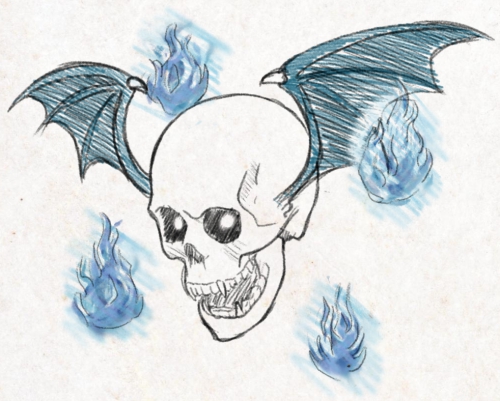
Anti-Fairies are mindless creatures who instinctively seek out sources of magic to consume. They regularly appear as flying skulls wreathed in colored flame, with some historical variation. Occasionally, they may be dormant when first encountered, but will spring to life once a living being comes close.
When encountered in the wild or in dungeons, Anti-Fairies will attempt to bite their prey to drain it of magic. In some cases, their bite infects the target with a minor curse that numbs their limbs, rendering them incapable of fighting back. The movements of an Anti-Fairy are erratic and they are often impervious to damage, making them dangerous foes for the unprepared.
Anti-Fairies may be restored to their natural forms through the application of magical powder created from Fairy mushrooms. While purification and magic replenishment are part of the restoration process, we theorize that the transformative magic innate to a Fairy requires the signature of Fae magic—which Fairy mushrooms can provide in spades—to facilitate the transformation back to their healthy form.
Zirro
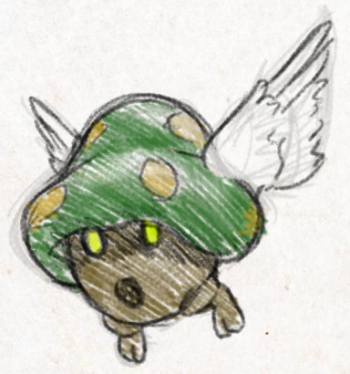
Like Anti-Fairies, Zirro are Fairies who have been exposed to significant environmental Malice, but retain their magic. Zirro appear as winged mushrooms with either green or blue caps. While Zirro have legs, they appear to be vestigial as Zirro are mostly seen in flight. When encountered, Zirro will attempt to body-slam their victim, summon gusts of wind to push the victim off ledges, or cast explosive magics to harm the victim.
Zirros can be restored to their true forms by expunging the Malice within them. However, due to the extent of the corruption, purification may prove fatal for many Fairies-turned-Zirro.
Malefic Great Fairy
While exceedingly rare, Great Fairies corrupted by Malice can exist. Great Fairies are naturally resistant to Malice due to their skill with magic and temperament towards good. However, we can attest to two cases in which Great Fairies have succumbed to Malice.
In the first, to which we can personally attest, an unusually powerful monster cast a curse on a fountain, turning its resident Fairies—including the Great Fairy—into Anti-Fairies (See: Anti-Fairies).
The second existed in another era and was slain by that era’s Hero of Courage. The Great Fairy came from a world saturated with ambient Malice[16]. Little else is known of her origins, such as if she was born to the world already corrupted by Malice or if she was corrupted later in life.
Elemental Forms
Similar to Humans, Fairies can adapt to a variety of environments. While they are not affected by heat or cold in the same way, Fairies must adapt to differences in environmental magic as well as the magic most available in their food sources. For example, Fairies in the Eldin region may gradually shift to a fire aspect, which allows them to draw magic more efficiently from the region and the local food sources (e.g. rock-meat and volcanic spring water).
Fairies born in locales with strongly aspected magic may develop permanent physical changes, such as differently shaped wings, antenna, or unique colorations. These adaptations further increase a Fairy’s ability to process magic of that aspect compared to those who were not born to it.
It should be noted that the elements referred to here are the esoteric Divine elements[17], rather than the Classical elements[18] more commonly known in our era.
We leave you with an illustration of a few observed elemental variations of Fairy wings.
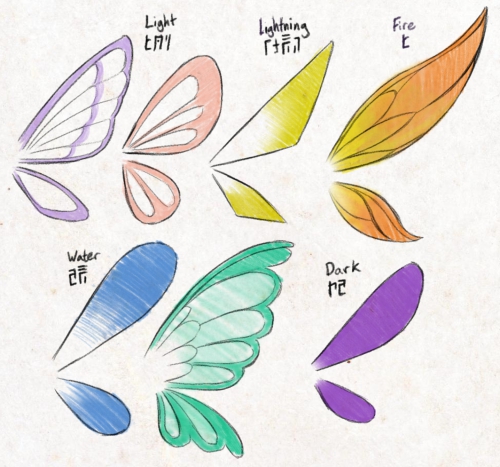
You’re just ending it there?
What more is to be said?
Well, leaving it without a conclusion or an abstract or something does seem a bit abrupt. At least restate the introduction or something.
If you want to read the introduction again, you may read the introduction again.
He’ll probably edit more in later anyway.
Until then, bye!
- ^ Or Great Mothers, as they are known to their children.
- ^ By consequence, Minish and Humans are related, but far more distantly than each is related to Fairies.
- ^ As a note, Spirits may take the form of Fairies. Further confusing the matter, Fairies (and other creatures) may become Spirits. Still, Spirits and Fairies should not be conflated.
- ^ Monsters are born from Malice, either created wholly or through the corruption of an existing creature (See: Malefic Corruption). In some eras, Malice-born creatures are unstable and their forms may decay with the application of transformative magic. The Fairy who attests to this effect calls the transformative magic, rather perplexingly, “Spell”.
The “Spell Spell”, you might say. - ^ Partial or incomplete metamorphosis, such as molting.
- ^ Similar to brood parasitism, in which a parasite manipulates a host to raise its young; however, the host species benefits from the Fairies’ presence and thus the relationship cannot be described as parasitic.
- ^ As a note, the gender “female” is not exactly the same as the Gerudo “vai” but the closest approximation. The intricacies of Gerudo culture are best left to their scholars, such as the author Obara Fonaso.
- ^ The most notable exception, of course, being the royal family of Hyrule. That said, the members of the royal family are the direct descendants of Hylia herself and are thus expected to have magical prowess far exceeding the average.
- ^ It’s unknown if this immortality extends to half-Fae offspring.
- ^ Branching filaments similar to roots in appearance.
- ^ Sometimes referred to as leylines.
- ^ From the Proto-Labrynnian “sylva”, meaning “forest”.
- ^ To quote a Hyrulean Army Captain with whom we traveled, “it’s safe once you remove the explosive bladder, but I wouldn’t recommend it unless you had to. They taste like bad onions.”
- ^ In regards to mushrooms and insects, it should be noted that the mushrooms and insects foraged by Fairies are not Fairies themselves nor are they related to Fairies.
- ^ I was disappointed to learn “fair” and “Fairy” have different etymological roots (from the old Ordonian “fayr” and the old Labrynnian “faerie”.
- ^ According to my collaborators, to say more is to risk changing history.
Thank you for your restraint.
By the time the vet knows who we’re talking about, he’ll have fought her already anyway. - ^ Light, Dark, Fire, Water, Lightning.
- ^ Air, Water, Fire, Earth.















When in Nayru’s good graces did you get Rulie to take his tunic off long enough to draw this?? Does he know?
I have my secrets.